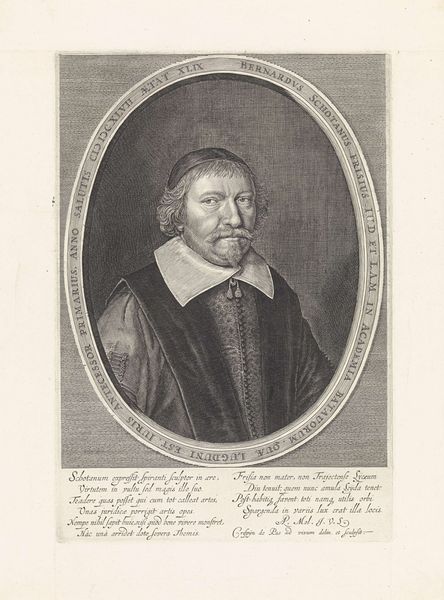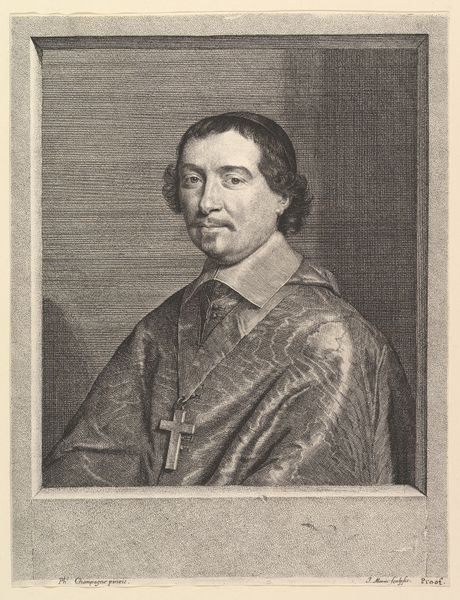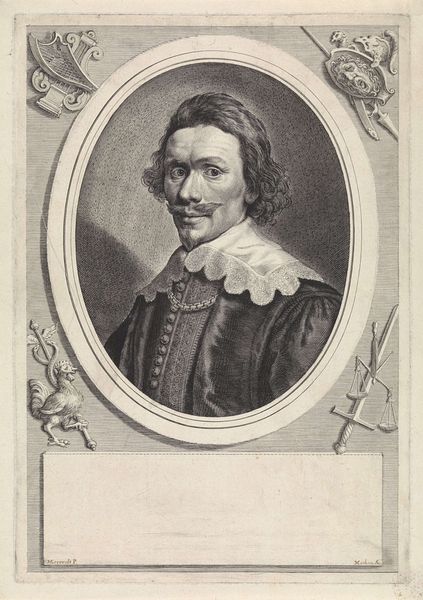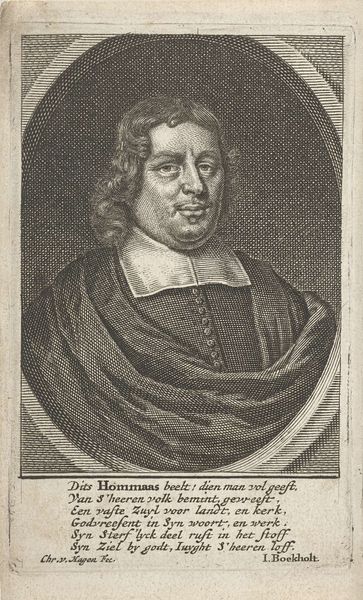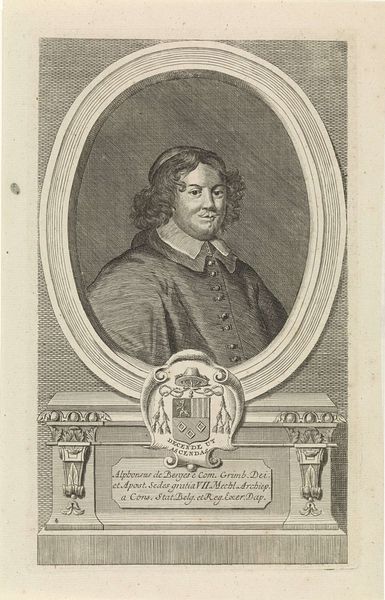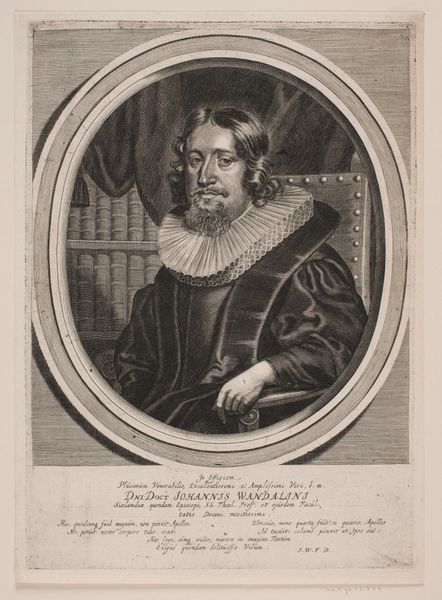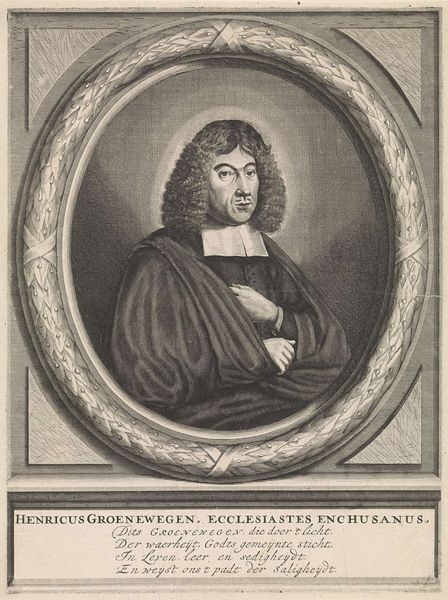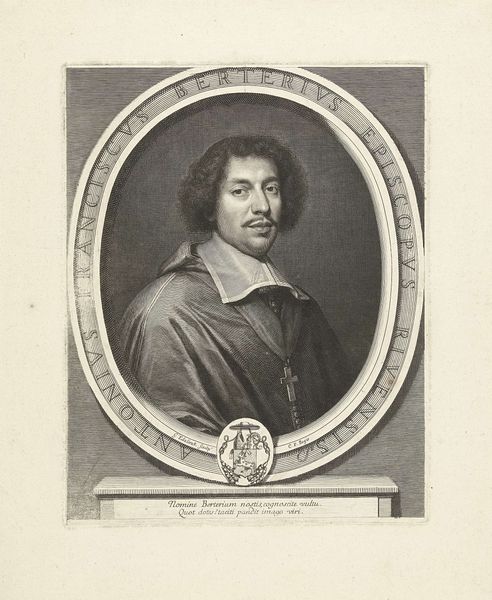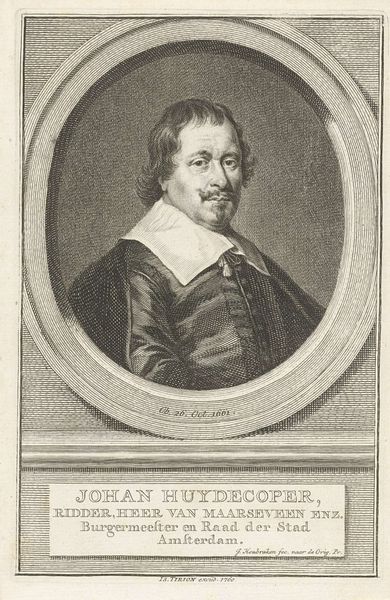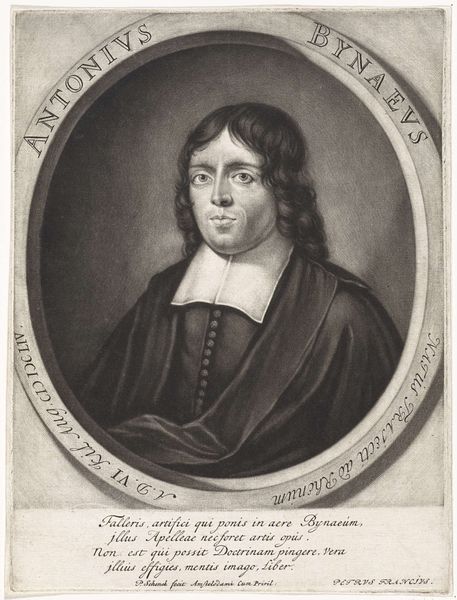
print, engraving
#
portrait
#
self-portrait
#
baroque
#
dutch-golden-age
# print
#
old engraving style
#
figuration
#
line
#
portrait drawing
#
engraving
Dimensions: height 110 mm, width 84 mm
Copyright: Rijks Museum: Open Domain
Editor: So, this is Cornelis van Dalen I's "Self-Portrait at the Age of 35," from 1637. It’s an engraving, which is incredible given the level of detail. The face has this direct, almost challenging gaze, and the line work is fascinating. I’m curious about the decision to present himself in this very formal, slightly austere way. What strikes you when you look at this print? Curator: The austerity, as you call it, is key. The Dutch Golden Age saw a rising merchant class and a shift in patronage away from the church and nobility. Artists like Van Dalen were now catering to a different audience. Does this image reflect that changing dynamic? What societal values does it project, or perhaps *subvert*? Editor: I see what you mean. It’s not flamboyant or romanticized like earlier portraits. There’s a restraint there, but also confidence. Could the direct gaze be interpreted as asserting the artist's individual worth? Curator: Precisely! Think about the rise of individual identity and the Protestant work ethic at the time. This image serves a very different function than the portraits of royalty, right? Those were about divine right and lineage. Here, it feels like Van Dalen is marketing his skill, almost advertising himself as a trustworthy professional. Is the engraving technique also important in making it easier to be distributed as a portrait or in albums? Editor: Absolutely. The choice of print makes it accessible. It challenges the exclusivity that was inherent in oil painting, allowing for a wider circulation. This could amplify Van Dalen's network and social positioning. Curator: Good. And how might his skill and the availability of printed portraits influence public perception of artists at the time? Do you believe it potentially challenged the power structures of traditional art patronage and helped artists gain their recognition? Editor: Definitely food for thought. I never considered how the medium itself could be a social statement. It shows the connection between the artist, his practice, and a growing public viewership in Dutch society. Thanks! Curator: And the rise of the printing industry allowed artists to circulate their works wider, changing who can own art and whose stories art tells. Very interesting!
Comments
No comments
Be the first to comment and join the conversation on the ultimate creative platform.
